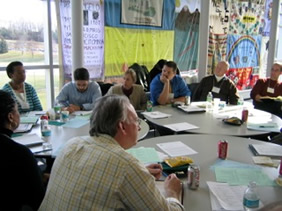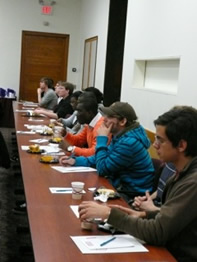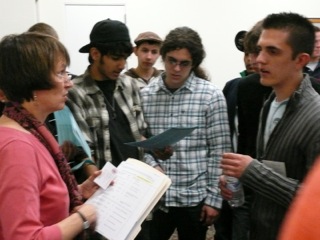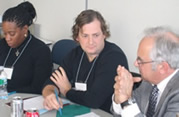Commonwealth Alliance for Information Technology Education (CAITE)
News and Events |
CAITE HighlightMore Massachusetts Community College Students Pursue Bachelors’ Degrees in Computing
These “pathways” efforts are aimed at creating clear and nurturing educational pathways from community college to 4-year universities. The work impacts the increasing number of community college students transferring to 4-year schools, the increase in number of articulation and transfer agreements for computer science and IT related degree programs, coordinating curriculum alignment between institutions, creating opportunities for students to learn about computing careers and educational pathways, and compiling and disseminating research and best practices for computing degree related transfer protocols and providing information to students and advisors via www.ITforU.org The results and feedback from the students attending Community College Day events indicate a positive impact. When asked what was most valuable about the day, students said, “Getting to see the campus and hearing current students talk about their experiences;” “That it showed how community college students are valued;” and “I got a lot of valuable information about the transfer program and current student insights.”
|

 Efforts by the Commonwealth Alliance for Information Technology Education (CAITE) have contributed to a 71% rise in the number community college transfers into 4-year universities in computing and IT fields in Massachusetts (from 2007 to 2011), and increasing the number of transfer agreements among institutions from 3 to 13 and counting. CAITE has reached more than 500 students, faculty, and staff at transfer-related events statewide. By making it easier for community college students to move on to 4-year campuses, we are responding to the need for more computer science majors to meet workforce demands.
Efforts by the Commonwealth Alliance for Information Technology Education (CAITE) have contributed to a 71% rise in the number community college transfers into 4-year universities in computing and IT fields in Massachusetts (from 2007 to 2011), and increasing the number of transfer agreements among institutions from 3 to 13 and counting. CAITE has reached more than 500 students, faculty, and staff at transfer-related events statewide. By making it easier for community college students to move on to 4-year campuses, we are responding to the need for more computer science majors to meet workforce demands. 






